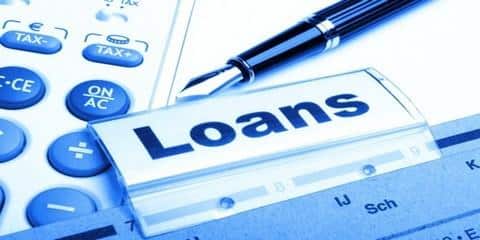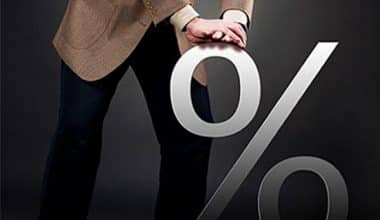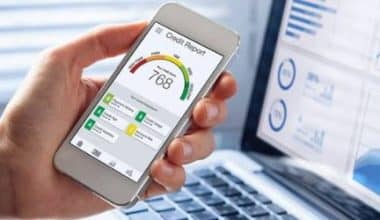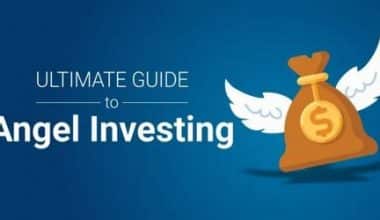Consumers oftentimes use loans to finance property purchases, education, debt reduction, and regular living expenditures. There are different consumer loans types for working capital, equipment, real estate, growth, and inventory for developing small businesses. In brief, the loan market offers a wide range of possibilities. So it’s critical to examine which form of debt obligation will work best for you. Different types of consumer loans are discussed in detail below, along with how they’ll influence your finances.
What is a Consumer Loan?
A consumer loan is a loan made to a consumer to help them fund specific types of expenses. A consumer loan, in other terms, is any sort of loan made to a consumer by a creditor. The loan might be secured (backed by the borrower’s assets) or unsecured (not backed by the assets of the borrower). There are different types of loans available for consumers.
Types of Consumer Loans
The most common types of consumer loans are installment loans. Lenders give out these loans to consumers in large lumps and then they repay them over time in what are usually monthly payments. Mortgages, student loans, auto loans, and personal loans are the most popular consumer installment lending products. So, lenders generally evaluate a consumer’s credit score and debt-to-income ratio to determine the interest rate and loan amount for which they qualify.
Consumer Loans Types With Rates and Loan Amount for which they are Qualified.
| Loan Maximum | Term Lengths | Secured or unsecured? | |
| Mortgages | Up to $424,100 for conforming loans Above $424,100 for jumbo loans |
15 or 30 years | Secured |
| Student Loans | Up to $12,500 annually for federal undergrad loans Varies for private loans |
Varies depending on the borrower’s debt and post-grad income | Unsecured |
| Auto Loans | Usually up to $100,000 | 2 to 7 years | Typically secured |
| Personal Loans | $25,000 to $50,000 for unsecured loans Up to $250,000 for secured loans |
Usually up to 10 years | Both |
#1. Mortgages
Consumers utilize mortgages to finance home purchases. Because most homes cost substantially more than the average individual earns in a year, mortgages design are in such a way to make homeownership more affordable by spreading the cost over many years. The 30-year fixed-rate mortgage is the most frequent type of home financing. This consumer loan is repaid in fixed monthly installments over a period of 30 years through a process known as amortization.
Mortgages with term lengths of 15 or 20 years are also available but are substantially less frequent because their monthly payment is significantly greater than the 30-year kind.
Mortgage programs vary based on which organization sponsors them.
Conventional mortgages are supported by Fannie Mae and Freddie Mac; FHA loans are meant for low-income or credit poor persons and are backed by the Federal Housing Administration, and VA loans are for veterans and are backed by the Department of Veterans Affairs. FHA loans are appropriate for consumers who want to put down less than 20%, whereas conventional mortgages are more reasonable for those who put down more than 20%.
| VA Loan | FHA Loan | Conventional Mortgage | |
| Mortgage Insurance | None | Upfront and annual premium for the life of the loan | Paid until 20% equity is reached |
| Minimum Down Payment | None required | 3.5% of home value required | 3% of home value for most qualified borrowers |
| Credit Score Minimum | Varies by applicant | 500 for 10% down payments580 for 3.5% down payment | 620 for fixed-rate640 for adjustable-rate |
#2. Student Consumer Loans
The majority of student loan borrowers choose federal student loans, which have fixed interest rates and do not have to be repaid until a few months after graduation. Subsidized loans and unsubsidized loans are the two primary categories of federal student loans. The subsidized version is intended for students with the greatest financial need, as the government pays the loan’s interest while the student is still in school.
Regardless of financial position, federal unsubsidized loans are available to the ordinary student applicant. Undergraduate students who are still financially reliant on their parents can borrow up to $31,000 overall over the length of their career, with an unsubsidized loan cap of $23,000. The interest rate for federal loans is the same for all borrowers.
Because federal loan limits are so high, some students choose to take out private loans. Private loans frequently have slightly cheaper interest rates than federal loans, though rates vary depending on each individual’s financial status. Student loans from private lenders can also be obtained with a variable interest rate, which means that the interest payment fluctuates depending on the market’s current interest rate. Private loan limits differ from lender to lender.
#3. Individual Loans
Personal loans are the most adaptable loan kind available in the consumer lending sector. So, personal loans, unlike mortgages, vehicle loans, and student loans, can be utilized for a variety of purposes, including debt reduction, day-to-day living expenditures, vacations, and credit building. Personal loans have periods that vary as much as their purposes. However, term lengths are typically less than ten years and the maximum amount is normally restricted at $100,000.
A personal loan is frequently used to consolidate current credit card debt. Credit card interest can quickly add up if the balance is not paid off, therefore personal loans are typically a more cost-effective option to pay off debt. Personal loans can be secured or unsecured, depending on the lender. Loans without collateral have higher interest rates since they are riskier for lenders to make.
#4. Automobile Loans
Auto loans can be used to buy new or secondhand vehicles. An auto loan’s term normally varies from 24 to 60 months, while longer loans of 72 or 84 months are becoming more frequent. Because used cars are riskier to finance, most lenders limit term lengths to 48 or 60 months for older car purchases. This is since, unlike property values, car values often fall with time. As a result, if the funded vehicle is also used as collateral, lenders must ensure that it is valuable enough to cover their losses if the borrower defaults.
Because car values depreciate quickly, shorter loan terms and greater down payments are best for auto loans. Borrowers who purchase an older used automobile are often “upside-down,” meaning they owe more on their loan than the car is now worth. To prevent this problem, it’s critical not to borrow money with a long payback plan and to consider how rapidly your car would depreciate. The repercussions of an auto loan default can be severe, as many loan servicers would insist on repayment even after default and asset forfeiture.
#5. Small Business Loan
Loans are used by businesses for many of the same reasons that individuals do: to fill gaps in short-term funding, to pay for everyday costs, and to purchase the property. Most small business loans can be used for general business expenses, but there are also specific business debt products such as commercial real estate loans, which are similar to consumer mortgages, and business lines of credit, which are similar to credit cards. For firms with specific needs, more complex financing instruments such as invoice factoring and merchant cash advances are available.
These types of consumer loans can be a valuable resource for owners wishing to increase their inventory, purchase new office space, or otherwise scale or finance their company. Small business loans can range from a few thousand dollars to over a million dollars. If you’re thinking about taking on debt to fund your business, compare lenders and loan kinds to find which loan program best meets your individual needs.
Consumer Loans: Secured vs. Unsecured
Secured Consumer Loans
Secured consumer loans are loans that have security backing them up (assets that are used to cover the loan if the borrower defaults). These loans typically provide the borrower with more funding, a longer repayment time, and a lower interest rate. The lender’s risk is decreased because the loan is backed by assets. For example, if the borrower defaults, the lender can take possession of collateralized assets and liquidate them to settle the due amount.
Unsecured consumer loans
Unsecured consumer loans are those that do not have collateral backing them up. These loans typically provide the borrower with a limited amount of funding, a shorter repayment time, and a higher interest rate. The lender risks additional risk because the loan is not secured by assets. In the event of borrower default, for example, the lender may be unable to retrieve the outstanding loan amount.
Consumer Loans Classifications
#1. Long-term loan
An open-end consumer loan, also known as revolving credit, is a loan that a borrower can use for any type of purchase but must repay a minimum amount of the loan, plus interest, by a predetermined date. In most cases, open-end loans are unsecured. If a client is unable to repay the loan in full by the due date, interest will be imposed.
An open-end consumer loan is something like a credit card. A credit card allows the consumer to make purchases, but the outstanding balance must be paid when it becomes due. If the consumer does not pay off the outstanding balance on the credit card, he or she will be charged interest until the balance is paid off.
#2. Fixed Interest Loan
A closed-end consumer loan, often known as installment credit, is a type of credit that is used to finance specific purchases. The client makes equal monthly payments over a certain length of time with closed-end loans. In most cases, such loans are secured. If a consumer is unable to pay the payment amounts, the lender may confiscate the collateralized assets.
Frequently Asked Questions
Home mortgages, auto loans, credit cards, personal loans, student loans, home equity loans, and HELOC loans are examples of common consumer loans.
If you have cheaper options, personal loans may be a terrible choice. However, there are compelling reasons to select them as well. Personal loans aren’t necessarily a terrible thing. A personal loan can be a good alternative if you work with a reputable lender, use the loan for the correct reasons, and can commit to repaying it.
Consolidating other existing obligations is one of the strongest reasons to receive a personal loan. Assume you have a few outstanding debts—student loans, credit card debt, etc.—and are having difficulty making payments. A debt consolidation loan is a form of personal loan that has two main advantages.
A small, healthy amount of debt is beneficial to a credit score if it is paid on time every month. Eliminating that debt by paying it off before the mortgage application may have a temporary negative influence on the borrower’s credit score.






